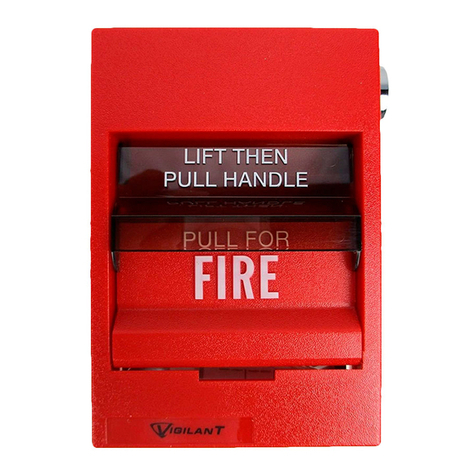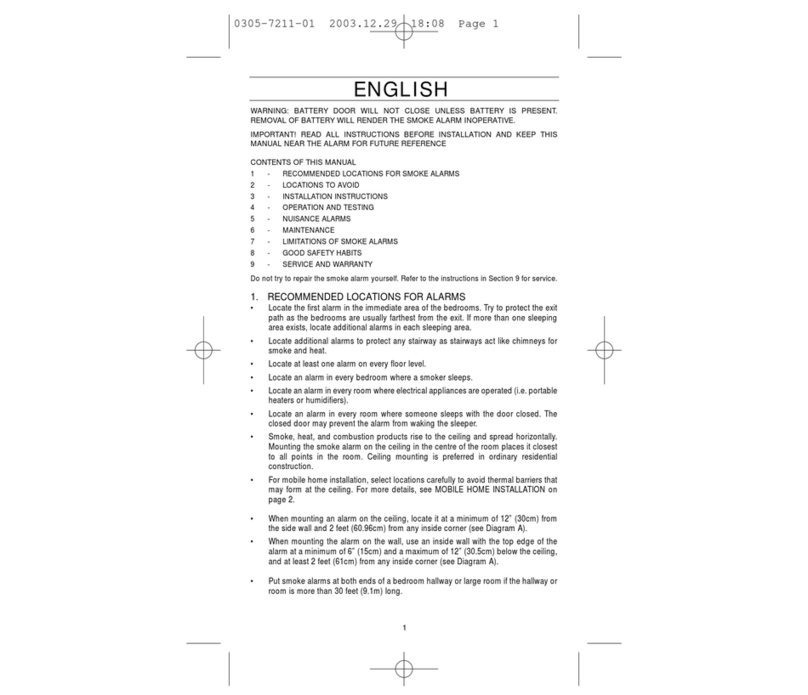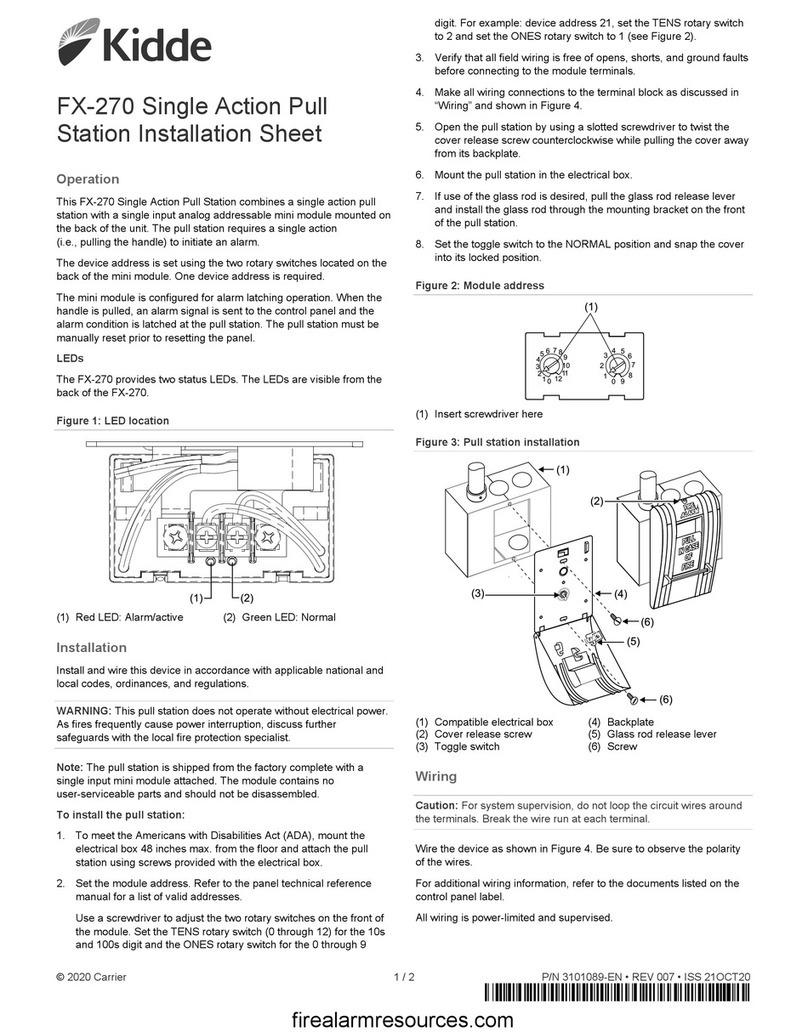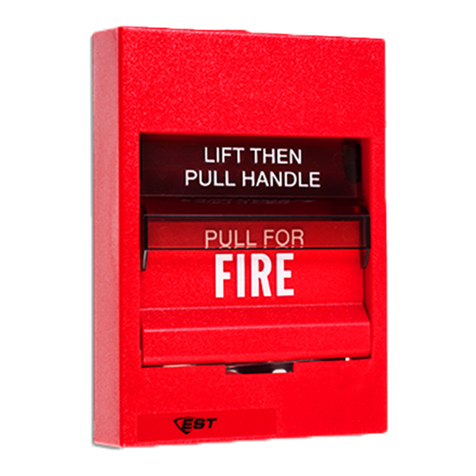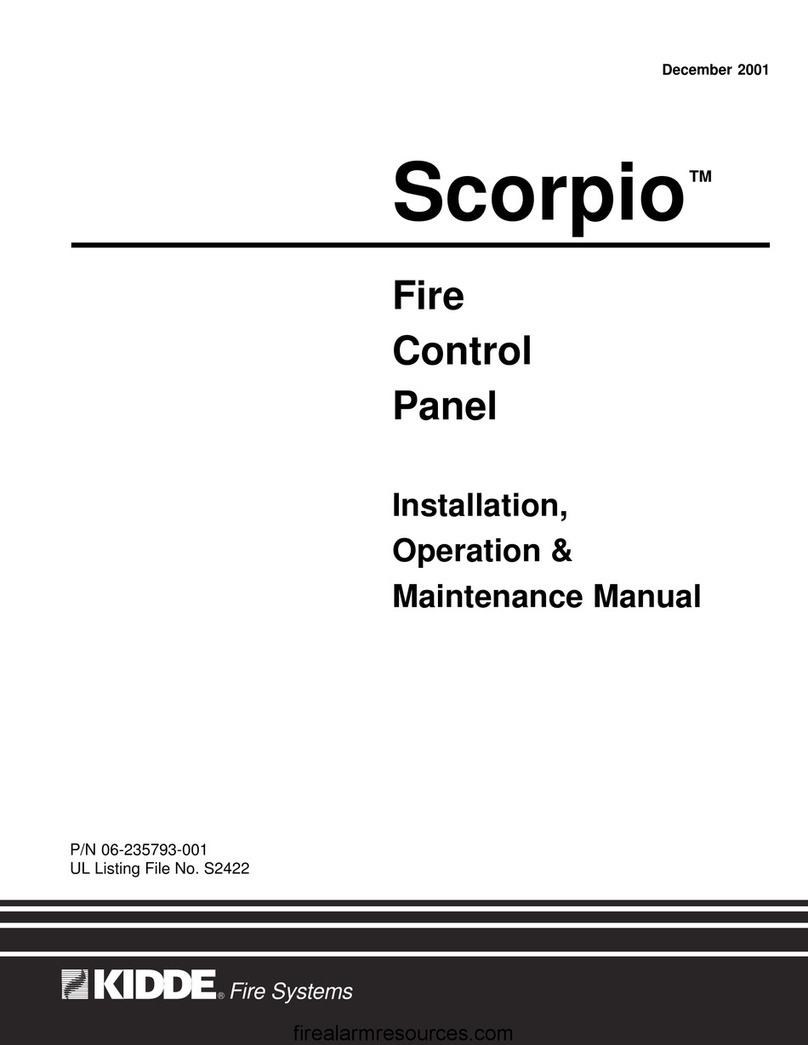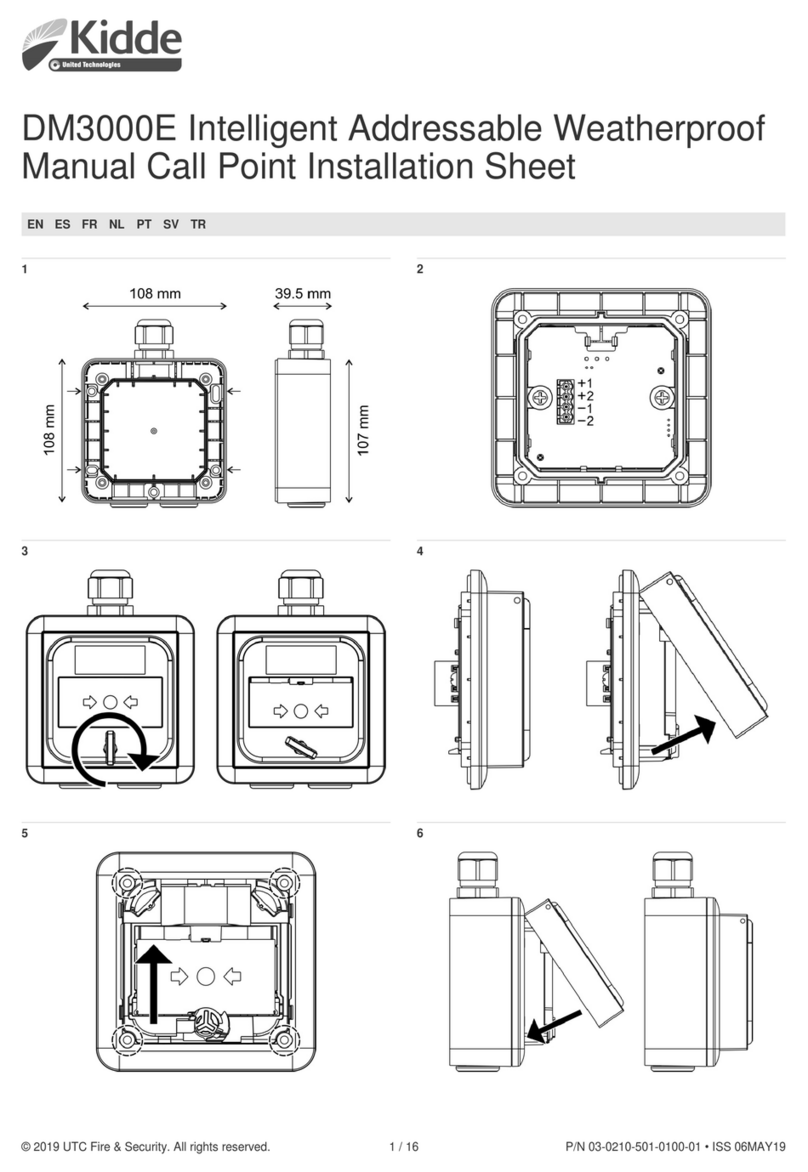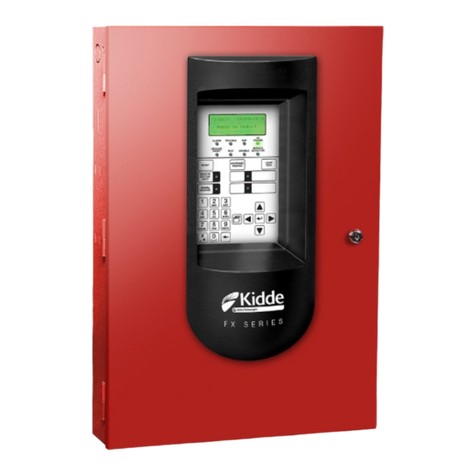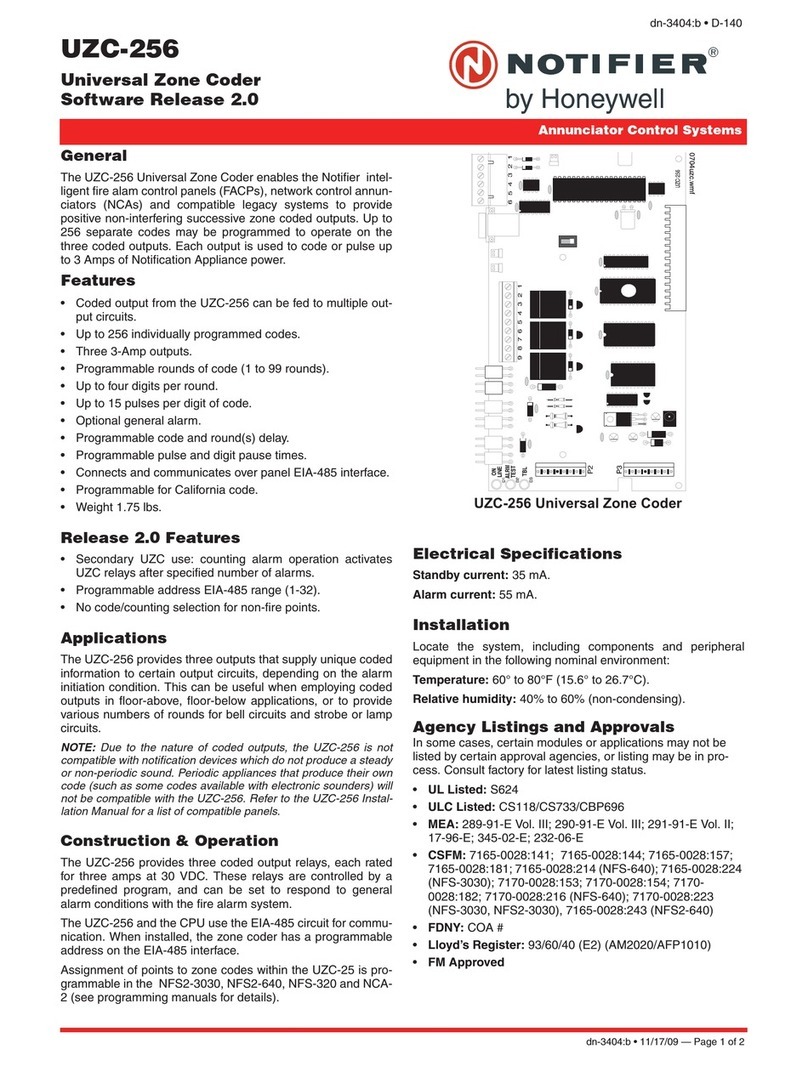
P/N 3102351-EN • REV 005 • ISS 28DEC18 v
equipment attached to the same phone line. Series installation of an RJ-31X jack is
depicted in the wiring diagram. If you have any questions concerning these instructions,
you should consult your telephone company or a qualified installer.
Testing
When programming emergency numbers or making test calls to emergency numbers, remain
on the line and briefly explain to the dispatcher the reason for the call. When system
maintenance, testing or modifications could result in the transmission of signals from the fire
alarm system to a supervising station, consult the supervising station to determine the best
time to send these signals (i.e., “off-peak” hours).
Compliance
•This dialer complies with Part 68 of the FCC rules and the requirements adopted by the
Administrative Council for Terminal Attachments (ACTA). A label attached to the dialer
contains, among other information, a product identifier in the format US:AAAEQ##TXXXX.
If requested, this information must be provided to the telephone company.
•The plug and jack used to connect the dialer to the premises wiring and telephone network
must comply with the applicable FCC Part 68 rules and requirements adopted by ACTA.
The dialer must be connected to a compliant RJ-31X or RJ-38X jack using a compliant
cord. If a modular telephone cord is supplied with the dialer, it is designed to meet these
requirements. See installation instructions for details.
•A ringer equivalence number (REN) is used to determine how many devices you can
connect to a telephone line. If the total REN value for all devices connected on a telephone
line exceeds that allowed by the telephone company, the devices may not ring on an
incoming call. In most (but not all) areas the total REN value should not exceed 5.0. To be
certain of the total REN value allowed on a telephone line, contact the local telephone
company.
•For products approved after July 23, 2001, the REN is part of the product identifier in the
format US:AAAEQ##TXXXX. The digits ## represent the REN without a decimal point.
Example: 03 is a REN of 0.3. For earlier products the REN is listed separately.
•If the dialer is harming the telephone network, the telephone company will notify you in
advance that temporary discontinuance of service may be required. If advance notice isn’t
practical, the telephone company will notify you as soon as possible. You will also be
advised of your right to file a complaint with the FCC, if you believe it is necessary.
•The telephone company may make changes to its facilities, equipment, operations, or
procedures that could affect the operation of the dialer. If this happens, the telephone
company will provide advance notice in order for you to make necessary modifications to
maintain uninterrupted service.
•If you are experiencing problems with the dialer, contact the manufacturer for repair or
warranty information. If the dialer is harming the telephone network, the telephone
company may request that you disconnect the dialer until the problem is resolved.

